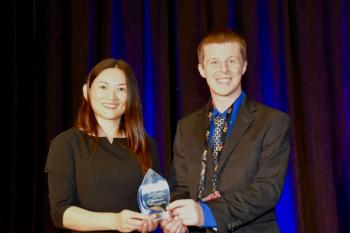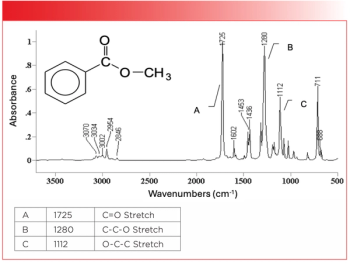
Using Infrared Imaging to Analyze Rare Diseases
During a talk at SciX, Rohit Bhargava outlined the evolution of Fourier transformation infrared spectroscopy and how it could be used as a method for treating rare diseases like cancer.
Scientists have been using microscopy to look at small objects since the 1940s, and the technology has evolved rapidly since then. Today, Fourier transformation infrared (FT-IR) spectroscopy, which uses infrared light to scan small samples and analyze their chemical properties, has the potential to be used for a variety of applications.
Rohit Bhargava, a professor at the University of Illinois Urbana-Champaign spoke about these advancements during a presentation at the SciX conference on Tuesday October 10. Bhargava’s presentation was part of a symposium honoring
During his presentation, Bhargava outlined the history of IR imaging and how his team at the University of Illinois Urbana-Champaign is working on improving existing technology to help treat diseases like cancer.
“I will share with you today how we think about the combined spatial spectral relationships in IR imaging and where that's led us,” he said. “This is something that is very, very inspired by Peter.”
Bhargava said his team is using FT-IR spectroscopy to look at the composition of disease more closely. “We can look at the disease, the physiology of the issue, in much nicer terms than we've ever been able to do,” he said.
The professor divides his work into three major areas: discovery, diagnostics pathology, and deep fake pathology. A deepfake is a convincing image created using artificial intelligence. Deepfake pathology, he said, is “essentially a way to cover the spectrum of human disease that is not available to us in the in the usual scenes.”
Bhargava’s lab can create deepfakes of a disease using spectroscopy to study its progression and assess risk. This technology is especially useful for rare diseases where there are fewer patients and obtaining images can prove costly and time consuming. Artificial intelligence, he said, provides a viable alternative.
The problem, however, Bhargava added, is that for advanced IR techniques to be used widely, scientists must have the technology to perform advanced and reliable testing.
“If you don’t have a microscope that performs at the limit and reproducibly, it’s never going to work,” he said. Bhargava’s team has been working for nearly a decade to redesign an IR microscope.
“We decided to focus on refractive optics, because the modern-day micro fabrication and assembly and mechanics allows you to do that,” he said. “We redesigned the optics, starting from the objective lens back all the way to the source.”
His team designed all the electronics in house, focusing on the mechanical, optical, and electronic design. Tests using the redesigned IR microscope have been promising, he said. The updated imaging system allows Bhargava and his team to collect three-dimensional images of cancer.
“The third dimension is really something significant,” he said. “Combined with artificial intelligence now, because the performance is so robust, and the signal to noise ratio is so high, you actually get really accurate cell classification.”
Newsletter
Get essential updates on the latest spectroscopy technologies, regulatory standards, and best practices—subscribe today to Spectroscopy.




